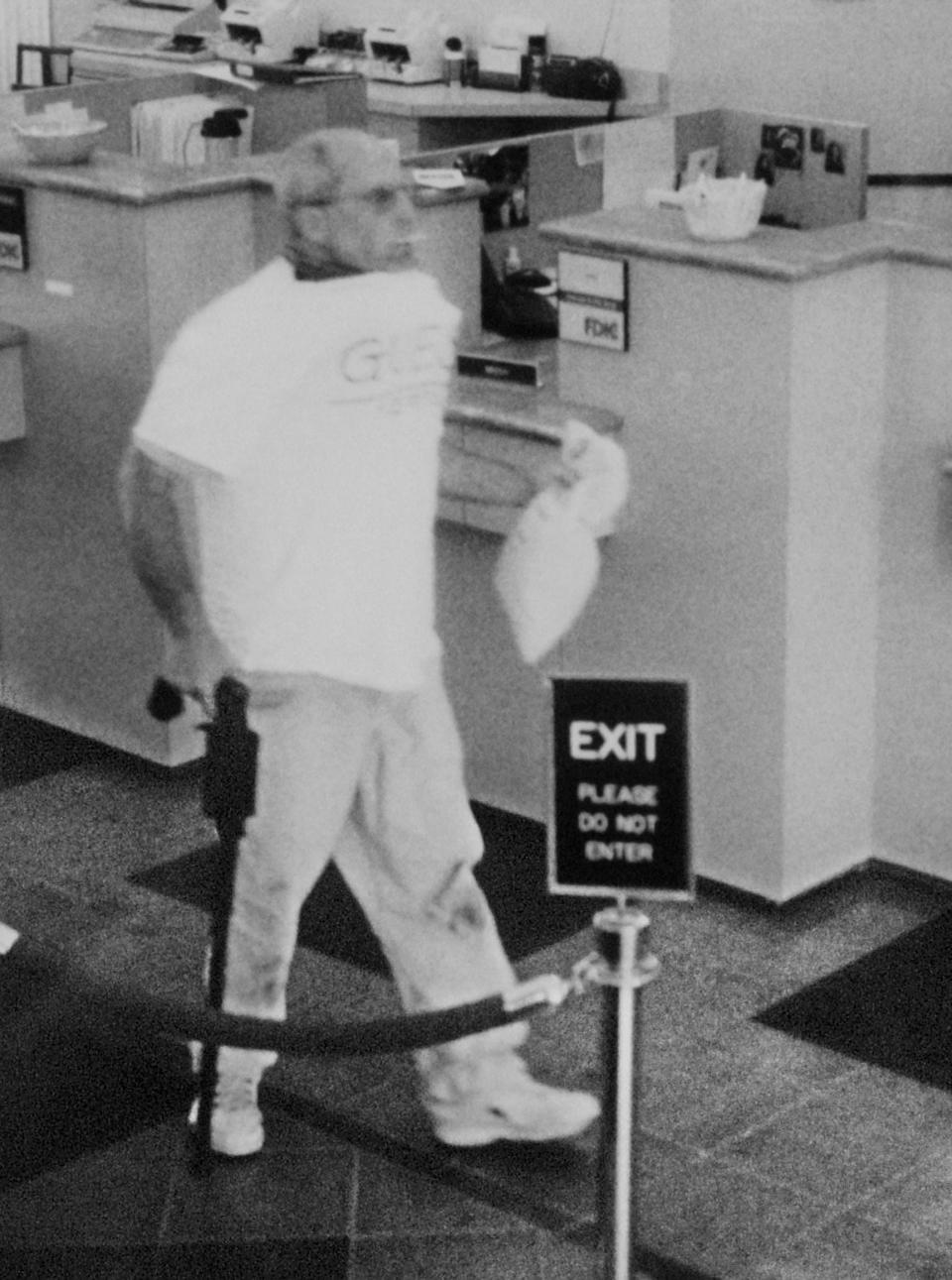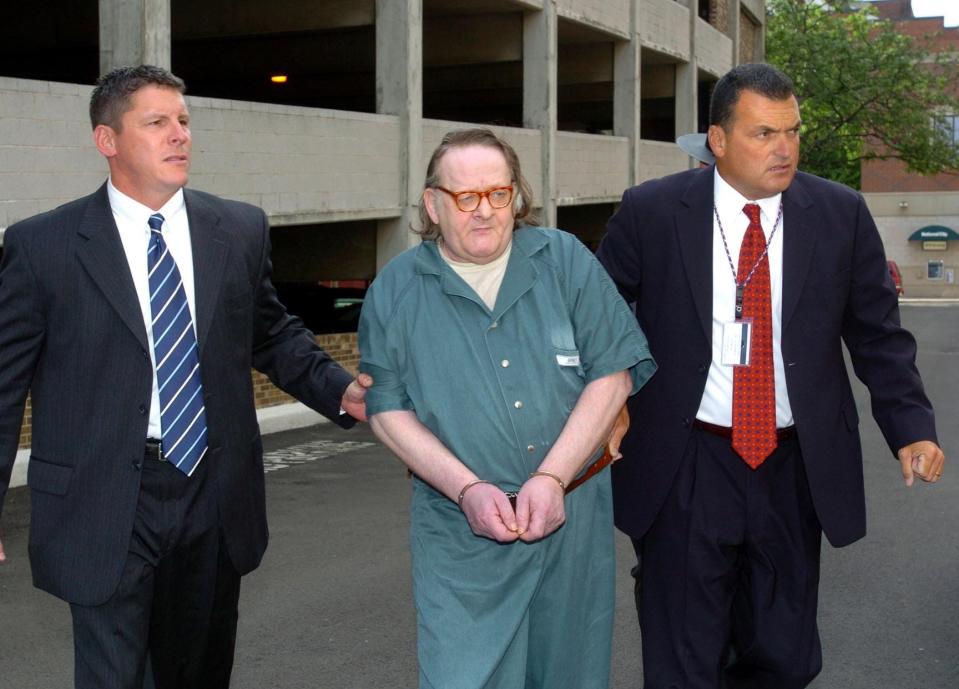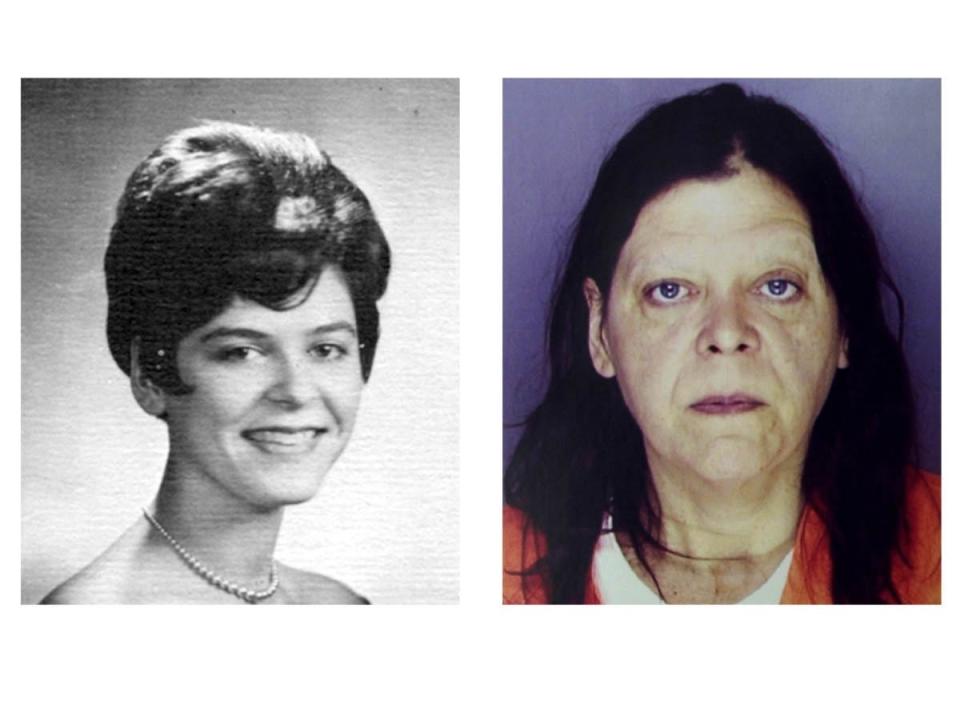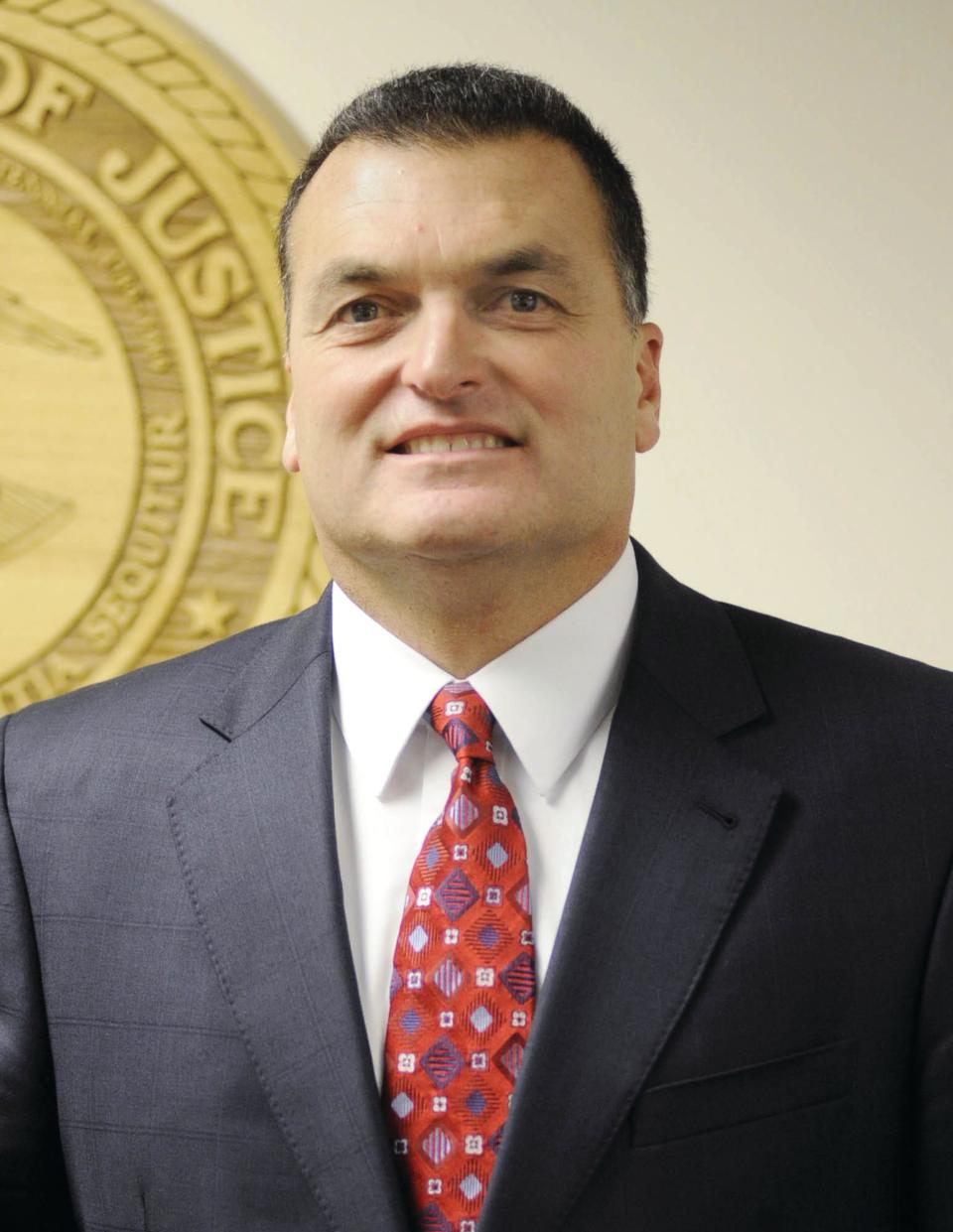As pizza bomber case turns 20, lead investigator reflects on Erie's most bizarre crime
Twenty years after the explosion near a bank in Summit Township, the two have become all but synonymous: Erie and the pizza bomber case.
Erie residents share picture-perfect memories of where they were at or around 3:18 p.m. on Aug. 28, 2003 — the moment the homemade bomb locked to pizza deliveryman Brian Wells' neck exploded after he robbed what was then the PNC Bank in the Summit Towne Centre on upper Peach Street, about 6 miles south of downtown Erie.
And many Erie residents recount the reactions that have greeted them ― while seated next to someone on an airplane, perhaps, or at a restaurant in another city ― after they mention they are from Erie, Pennsylvania.
"The pizza bomber case," invariably comes the remark.
The case was unique and memorable for many reasons, especially the cast of characters ― the "fractured intellectuals," as they called themselves.

The co-conspirators Marjorie Diehl-Armstrong, William A. Rothstein and Kenneth E. Barnes acted in ways that displayed mental illness, brilliance and idiocy — sometimes all at the same time — as they hatched and executed the diabolical plot that ended in the death of Wells, a naïve 46-year-old pizza deliveryman who loved puzzles.
He held up the bank, at 7200 Peach St., carrying a gun disguised as a cane and wearing a live bomb locked to his neck. After he walked away with $8,702, he was supposed to have used directions in handwritten notes to guide him on a scavenger hunt to collect clues to defuse the bomb.
The bomb went off before Wells went far on the journey. He died near the bank in a parking lot where state police troopers had handcuffed him and quickly backed away when they realized he was wearing an explosive device.
Death has also claimed the other major players in the pizza bomber case, also known as the collar bomb case.
Diehl-Armstrong, 68, tried and convicted in federal court in Erie in 2010 and sentenced to life plus 30 years in 2011, died of cancer in a federal prison in Texas in 2017. She was accused of helping develop the bank robbery plan so Wells would get money that she could use to pay Barnes to kill her father, Harold Diehl, who she said was squandering her inheritance by giving away money to his friends and neighbors. Harold Diehl, 95, died of natural causes in 2014.
Barnes, 65, a crack cocaine dealer who testified against Diehl-Armstrong and got 22½ years in a plea deal, died of cancer in a federal prison in North Carolina in 2019.
Rothstein, 60, Diehl-Armstrong's former fiancé, died of cancer in 2004, three years before an indictment was returned in the case.
Floyd A. Stockton Jr., 75, Rothstein's erstwhile housemate and recipient of an immunity deal, departed most recently. He died in August 2022 of respiratory failure while a resident of Bellingham, in northwestern Washington state.
But the case lives on.
It lives on via, among other things, archived newspaper stories, books, a locally produced play, the internet, the Netflix docuseries "Evil Genius" and the memories of the investigators.

Those investigators include the lead FBI agent on the case, Jerry Clark, who retired from the bureau in 2011. He has co-authored two books on the case and is an associate professor in the criminal justice program at Gannon University in downtown Erie.
To mark the 20th anniversary of the pizza bomber case, the Erie Times-News asked Clark, 62, to reflect on the investigation and the relationship between the unforgettable crime and Clark's hometown of Erie.
The Erie Times-News edited Clark's remarks for length and clarity.
Looking back on an unforgettable day in Erie
Question: It's been 20 years. What do you remember most about that day?
Answer: In ways, it seems like it was yesterday. The fact that it's already 20 years, it's hard for me to wrap my head around that.
I probably worked hundreds of bank robberies over my career, so another bank robbery for me was nothing unusual.
But usually when I get on scene, I get a feel for what's going on. This one had a different feel immediately, obviously, with him (Brian Wells) sitting with the Pennsylvania State Police and having the discussion and me overhearing and watching the whole thing.
And then, at 3:18 on August 28th, 2003, detonation. I go through life never forgetting it.
Q: You discuss the case in your classes at Gannon, and you give presentations about the case nationally. In those talks, you say no one should forget that someone died in this case — Brian Wells.
You also mention others who died: Diehl-Armstrong's boyfriend James Roden, 45, whom she shot to death in the city of Erie and whose body was stuffed in a freezer in Rothstein's garage in Summit Township; and Robert Pinetti, 43, Wells' close friend and fellow pizza deliveryman who died of an accidental but suspicious drug overdose three days after Wells was killed.
What do you want people to remember about their deaths?
A: Three people died in a really, really horrific way. If they're complicit or not, you have to overlook that —somebody's a victim. They were killed in a very nasty way. And they have family that are left hanging with that. So I never forget it. I talk about it, and I still think of the families and what they've probably gone through. And now to have this 20 years later come back up and all the difficulties they have. That's always on my mind.
The mysteries that remain in the pizza bomber case
Q: What do you find most fascinating about the case?
A: The most fascinating thing is the multiple jurisdictions (FBI, state police and Erie police), three different deceased people in three weeks and trying to wrap that into one case. And how the layers just kept peeling off.
I try to talk to students about how you really don't know what happened in a crime unless you were there or whatever forensic science tells you. Those are the really the two things you have to depend on. And then that leaves you the third area: You got to have somebody tell you. So do you always know everything about a case? No. Because you weren't there. So you're depending on those three things.
Do I think we have the right people and charged the right people in this case? Absolutely. Do we know everything? No.
Q: What are the mysteries you think are still out there with this case?
A: The mysteries are all there. Again: right people, but not the whole set of circumstances. For example, there's two vehicles in this case that were used; the one Rothstein drove during the day, (the same) gold-colored car that Marjorie was seen driving on the highway, going the wrong way (the afternoon of the bombing). I never found that vehicle.

The day before the bank robbery, when Brian Wells was having a pre-planning meeting, there was a blue vehicle that left from that meeting. I never found that vehicle.
What exactly happened at the scavenger hunt sites?
There are things that still are the mystery to me that irk me and bother me. But as far as who was involved, I think were satisfied with that.

Q: What about the bomb that was locked to Wells' neck? Will we ever know for sure who developed and made it and how?
A: We know pieces (of its origins). Certainly we know Rothstein designed it and made the bomb and the cane gun. But we know that Barnes helped with the timing mechanism. I'd love to know more about that. We know Stockton started to work on pieces, and then Rothstein said he wasn't working fast enough, so he got cut out.
So there's different things I would love to know about the construction and where exactly it all was put together. Again, you just don't know.
Marjorie Diehl-Armstrong and her role in the case
Q. What did you think of Marjorie Diehl-Armstrong, who was diagnosed as bipolar?
A: You could go a whole career in law enforcement and never interview somebody like Marjorie Diehl-Armstrong. And a lot of times I'll say how fortunate I was ― and I know that sounds very bizarre to people who hear that ― but how fortunate I was to interview her the multiple times that I did. She's as unique as they come: a female serial killer who killed with violent means. You don't see that. She just was an absolute maniacal unicorn, the way I see it. Just one of a kind.
She gets credit for being the mastermind of this pizza bomber case, but quite honestly, she had the thought really to get the money to kill her father. But I really think the scheme of the whole plan was masterminded by Bill Rothstein. The notes, the scavenger hunt, the bank robbery, the bomb around the neck, the cane gun ― that's got Bill Rothstein written all over it.
Q: What about the other people involved, and how they all somehow found each other in Erie?
A: This group of people all had like-minded bad intentions in many different facets, whether it was crack dealing with Barnes and Marjorie with killing people, and, with Bill Rothstein, helping people get away with murder. The fact that this group of people found each other and then bonded over that, but yet we're so paranoid of each other that they turned on each other is really the most amazing part of the story.
Everything gets lost in the fact that it was a bank robbery, but this was much more than that. It's not about the bank robbery, it's about the characters who made up this case that made it so unique.
Q: What one word would you use to describe this case?
A: Complex. It wasn't just one thing, it wasn't just a bank robbery. There's bank robbery, there's homicide, there's scheming, there's planning, there's the scavenger hunt, there's pipe bombs. There is so much involved in this.
I have never been so proud to be a law enforcement officer is when I worked this case. And the reason I say that is, Pennsylvania State Police and the court system, and the Erie police and the bomb squad and our (FBI) lab at Quantico, everybody pitched in to solve a very unique case.
I'm so proud of that because we never gave up. It was times during this case where Jason Wick (the agent on the case with the Bureau of Alcohol, Tobacco, Firearms and Explosives) and I and the Pennsylvania State Police troopers assigned to this case all could have said, "That's it. You know what? We're not gonna get to the bottom of this. It's just too complex." We never gave up.
Erie's everlasting connection to a once-in-a-lifetime crime
Q: Can you talk about having people ask you about this case when they hear you are from Erie?
A: Erie is such a great, beautiful place. I'm so pro-Erie. I I could work for the Chamber. I love Erie so much. Erie sometimes gets attached to this in a negative light. And so what I say to people about that is, Bad things happen in good places, and bad things happen to good people. And Erie just happened to be the place for that.
But every show I do, and I've done multiple national shows, I always discuss the beauty of Erie. The most positive thing about this to me is we solved it. It wasn't a mystery. It wasn't going to be held out there forever, as they never found the people who did this. We found the people who did this. We solved the crime in a very beautiful place where a bad thing happened.
Q: All these years later, what else do you want to say about the pizza bomber case?
A: I just can't thank enough Marshall Piccinini, who prosecuted the case (as an assistant U.S. attorney). He worked so diligently to get us through what we needed, because three weeks of trial will put you through the ringer and you better have everything done right. And Judge (Sean) McLaughlin, how he handled Marjorie Diehl-Armstrong in trial and all the rulings he made, I think really shows our criminal justice system works. It took a large group of people to put a big case together. And the outcome shows the system is just.
Ed Palattella has covered the Erie pizza bomber case for the Erie Times-News since the case's inception. He is the co-author, with Jerry Clark, of two books on the case: "Pizza Bomber: The Untold Story of America's Most Shocking Bank Robbery" (Berkley/Penguin Random House) and "Mania and Marjorie Diehl-Armstrong: Inside the Mind of a Female Serial Killer" (Rowman & Littlefield).
Contact Ed Palattella at epalattella@timesnews.com. Follow him on X @ETNpalattella.
This article originally appeared on Erie Times-News: Mysteries of the Erie pizza bomber: Revisiting the case 20 years later
